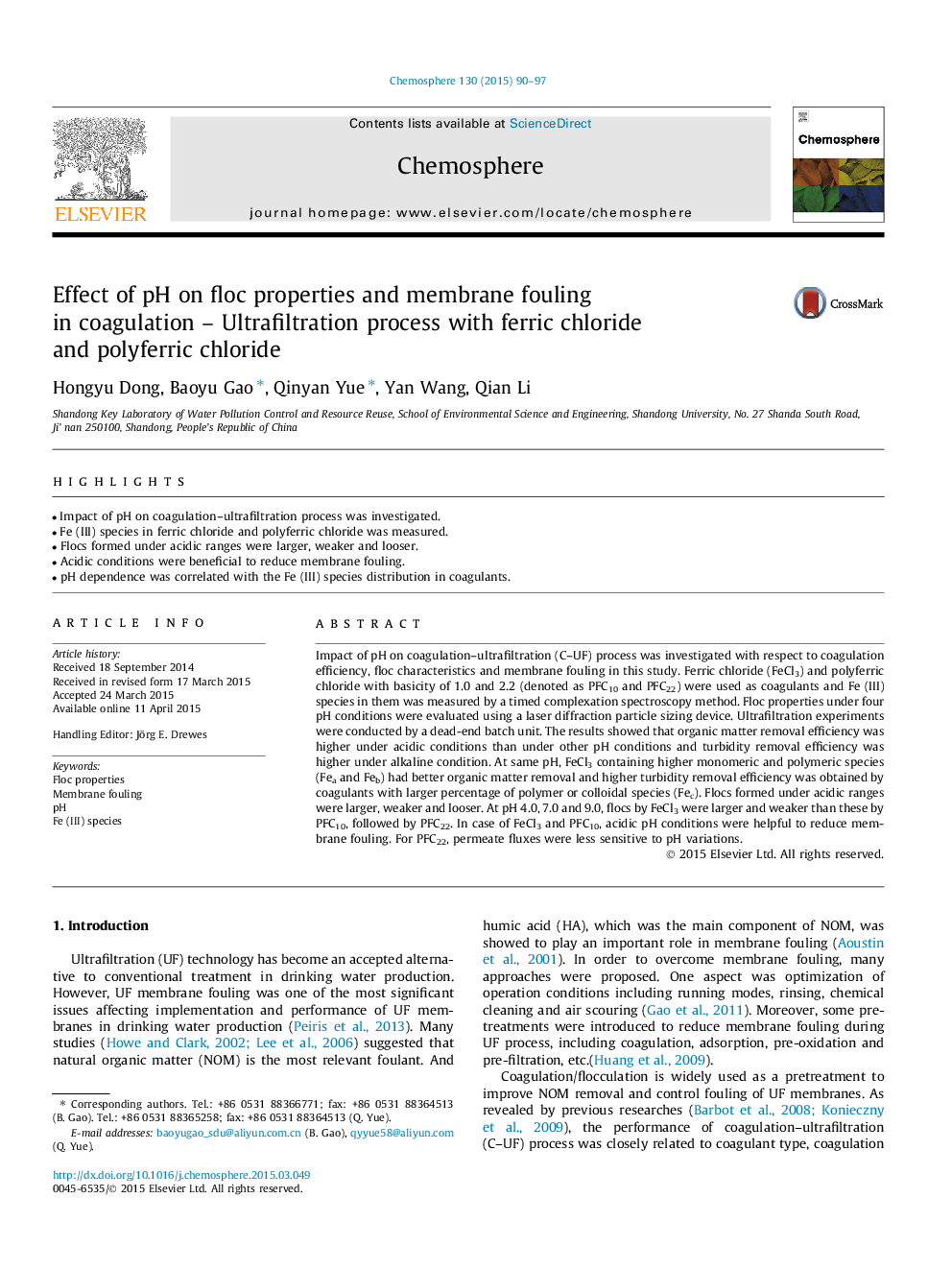| Article ID | Journal | Published Year | Pages | File Type |
|---|---|---|---|---|
| 4408328 | Chemosphere | 2015 | 8 Pages |
•Impact of pH on coagulation–ultrafiltration process was investigated.•Fe (III) species in ferric chloride and polyferric chloride was measured.•Flocs formed under acidic ranges were larger, weaker and looser.•Acidic conditions were beneficial to reduce membrane fouling.•pH dependence was correlated with the Fe (III) species distribution in coagulants.
Impact of pH on coagulation–ultrafiltration (C–UF) process was investigated with respect to coagulation efficiency, floc characteristics and membrane fouling in this study. Ferric chloride (FeCl3) and polyferric chloride with basicity of 1.0 and 2.2 (denoted as PFC10 and PFC22) were used as coagulants and Fe (III) species in them was measured by a timed complexation spectroscopy method. Floc properties under four pH conditions were evaluated using a laser diffraction particle sizing device. Ultrafiltration experiments were conducted by a dead-end batch unit. The results showed that organic matter removal efficiency was higher under acidic conditions than under other pH conditions and turbidity removal efficiency was higher under alkaline condition. At same pH, FeCl3 containing higher monomeric and polymeric species (Fea and Feb) had better organic matter removal and higher turbidity removal efficiency was obtained by coagulants with larger percentage of polymer or colloidal species (Fec). Flocs formed under acidic ranges were larger, weaker and looser. At pH 4.0, 7.0 and 9.0, flocs by FeCl3 were larger and weaker than these by PFC10, followed by PFC22. In case of FeCl3 and PFC10, acidic pH conditions were helpful to reduce membrane fouling. For PFC22, permeate fluxes were less sensitive to pH variations.
